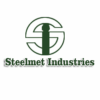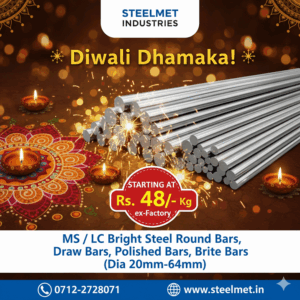Are you trying to choose the perfect steel for your general engineering needs? You’re not alone. The EN5 series is a family of medium carbon steels that offers a great balance of strength and affordability, but picking between EN5, EN5A, and EN5B can be a challenge. We’ve compiled this expert guide to clarify the subtle but critical differences in their chemical composition, mechanical properties, and machinability, helping you make a confident material selection for your project.
EN5 Series – A British Standard Overview
The EN5 series, as defined by the BS 970 (1955) standard, includes a group of medium carbon, non-alloy steels. They are designed for a wide array of general engineering applications where moderate strength and toughness are required. Often used as an upgrade from mild steels like EN3, the EN5 family is a go-to choice for manufacturing shafts, spindles, and machine parts.
Key Differences: Chemical Composition
While all three grades share a similar carbon content, the key difference lies in the presence of additional elements, particularly sulphur and phosphorus, which are added to improve machinability. This is the primary factor that differentiates their performance in a workshop setting.
| Grade | Carbon (C) | Manganese (Mn) | Sulphur (S) | Phosphorus (P) |
|---|---|---|---|---|
| EN5 | 0.35–0.45% | 0.60–1.00% | 0.06% max | 0.06% max |
| EN5A | 0.35–0.45% | 0.60–1.00% | 0.06% max | 0.06% max |
| EN5B | 0.35–0.45% | 0.60–1.00% | 0.08–0.13% | 0.07% max |
Note: The specifications for EN5 and EN5A were later merged into the free-machining variant of 070M45 in the BS 970:1991 standard. The increased sulphur in EN5B is specifically what makes it a free-cutting steel, drastically improving its machinability.
Mechanical Properties Comparison (Indicative)
The mechanical properties are generally similar across the family, as they share a similar base composition. However, the additions in EN5B that boost machinability can slightly compromise its toughness and elongation compared to the other grades.
| Grade | Tensile Strength (MPa) | Yield Strength (MPa) | Elongation (%) | Hardness (BHN) |
|---|---|---|---|---|
| EN5 | 550–650 | ~300 | ~16 | 170–220 |
| EN5A | Similar to EN5 | Slightly lower | ~17 | 160–210 |
| EN5B | Similar to EN5 | Similar | ~15 | 160–210 |
Note: These values are indicative and can vary based on heat treatment and section size. For precise values, please refer to the specific mill test certificate.
Need a material with certified properties for a critical application? Our team at Steelmet Industries can help you source the right steel. **Get a Quote Today**.
Machinability, Weldability, and Applications
This is where the choices become clearer. The increased sulphur in EN5B acts as a chip-breaker, leading to a significant improvement in machinability, making it the top choice for high-volume turning. This, however, comes at a cost to its weldability and toughness.
| Grade | Machinability | Weldability | Cold Workability | Primary Applications |
|---|---|---|---|---|
| EN5 | Good | Fair | Fair | Shafts, Spindles, General machine parts |
| EN5A | Better | Limited | Moderate | Gears, Bolts, Components requiring better machining |
| EN5B | Excellent | Poor | Low | High-speed turning, Bushings, Fasteners (high volume) |
How to Choose: EN5 vs EN5A vs EN5B
Choosing the right grade depends on your specific manufacturing priorities. Use this quick guide to determine which steel is the best fit for your needs.
| Your Primary Need | Choose This Grade |
|---|---|
| General-purpose strength and toughness | EN5 |
| A balance of strength with better machinability | EN5A |
| Best machinability and reduced manufacturing time | EN5B |
From the Experts at Steelmet Industries
The choice between these grades is a classic metallurgical trade-off. While EN5B offers superior machinability and lower per-piece cost for high-volume parts, it’s crucial to remember that its higher sulphur content means it’s not suitable for applications that require excellent weldability or high toughness under shock loading. For critical components, always verify the application requirements against the material properties.
For more detailed advice on material selection, feel free to contact our team at Steelmet Industries for a free consultation. Call us at +91-712-2728071 or send a message on WhatsApp at the same number.
Frequently Asked Questions (FAQs)
Q: What is the main difference between EN5 and EN5B?
A: The primary difference is the higher sulphur content in EN5B, which makes it a “free-cutting” steel. This significantly improves machinability at the expense of weldability and toughness.
Q: Can EN5B be welded?
A: While it is possible to weld EN5B, its high sulphur content makes it prone to cracking and poor weld quality. It is generally not recommended for applications requiring welding.
Q: What are the modern equivalents for EN5, EN5A, and EN5B?
A: Under the later BS 970:1991 standard, EN5 and EN5A are roughly equivalent to 070M45, while EN5B is comparable to free-cutting variants of 070M45 or a steel like 11SMn37 in European standards.


